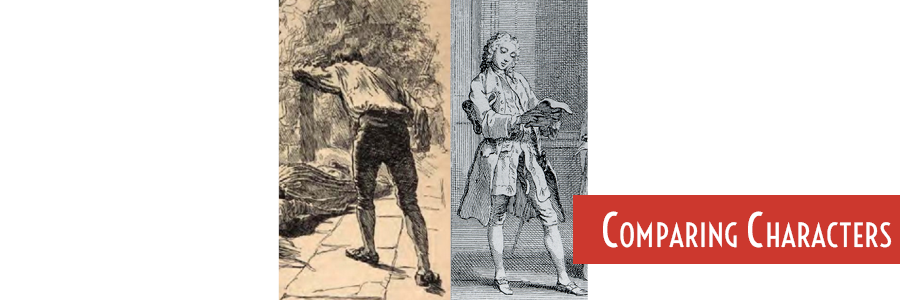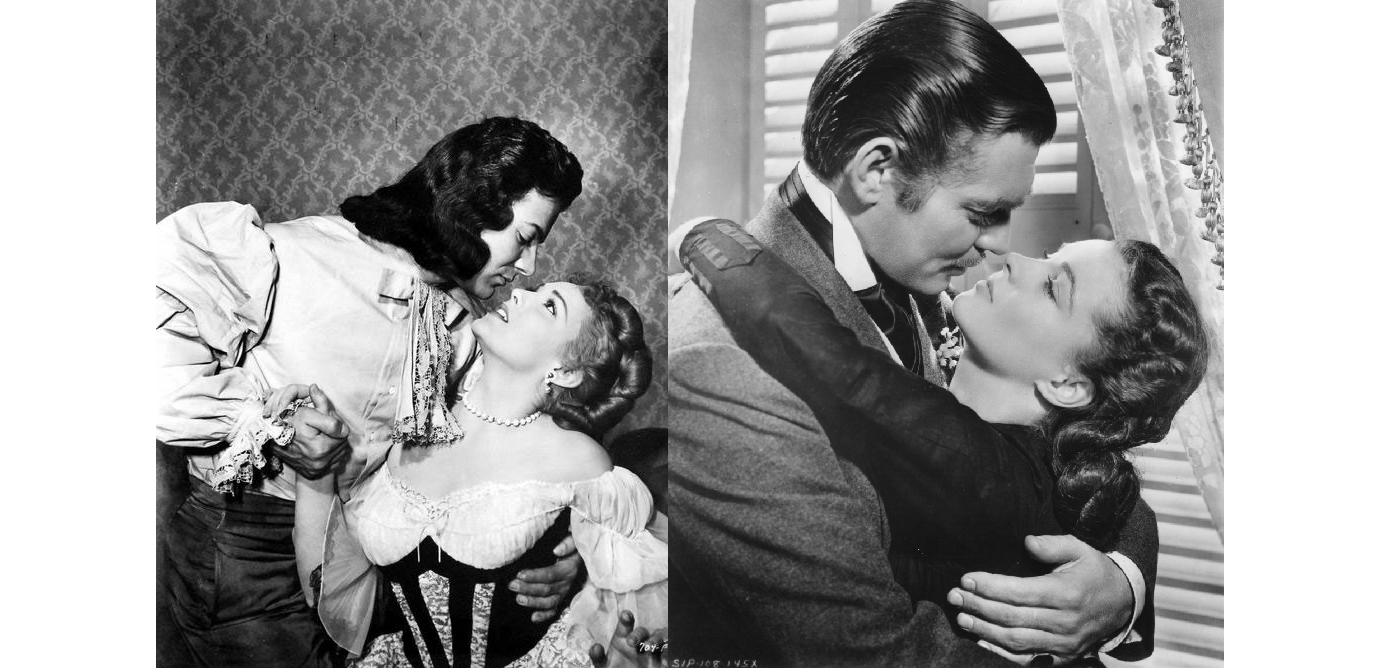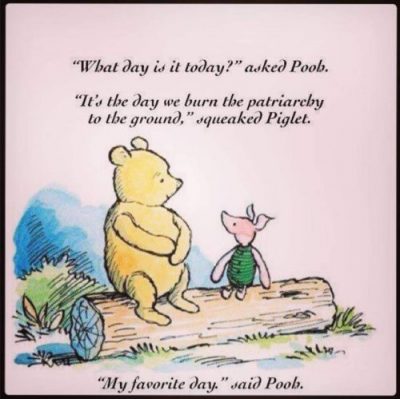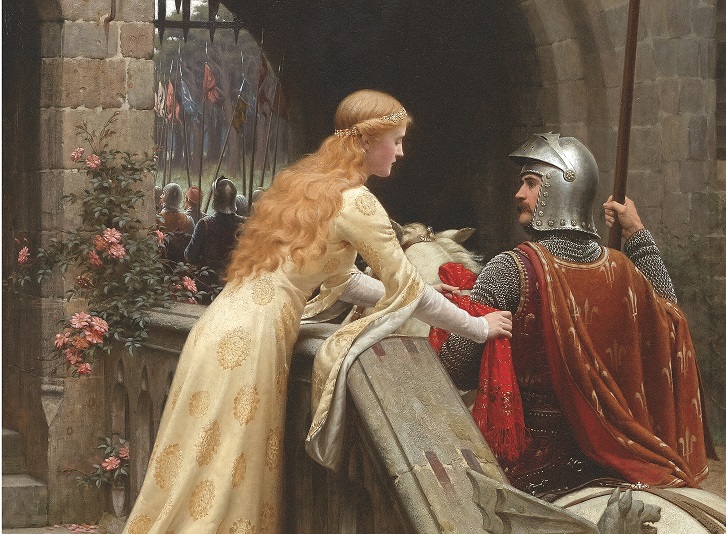As I continue my reading, I’m very curious to see how each work compares and contrasts to those which came before. Part of this project is about tracing the evolution of the romance novel and associated tropes and archetypal characters. This post will be comparing Jane Eyre with Pamela and Pride and Prejudice and I will work on similar comparisons with the readings going forward.
As much of a chore as Pamela was, I’m glad I did the work because I can see Samuel Richardson’s influence on Charlotte Bronte in Jane Eyre as well as in Jane Austen’s Pride and Prejudice. Bronte actually gives Pamela a specific callout during the early childhood chapters of Jane Eyre’s story!
Bessie sometimes narrated on winter evenings, when she chanced to be in good humour; and when, having brought her ironing-table to the nursery-hearth, she allowed us to sit about it, and while she got up Mrs. Reed’s lace frills, and crimped her night-cap borders, fed our eager attention with passages of love and adventure taken from old fairy tales and older ballads; or (as at a later period I discovered) from the pages of Pamela, and Henry, Earl of Moreland.
I found it interesting that Bronte mentions Richardson’s work in the same breath as fairy tales, but it is obvious from the rest of the novel that Pamela acts as a foundational tale underlying much of Bronte’s story. I’m going to specifically look at the characterization of Jane and Rochester in comparison to Pamela and Mr. B, with occasional notes about Lizzy and Darcy. While both Austen and Bronte read Richardson, evidence suggests that Bronte didn’t read Austen until after she’d written Jane Eyre. While this means that I can’t look for influence of Austen on Bronte, I still think it is important to look at their characters together because the two authors are so frequently read together and the question of ‘Austen or Bronte?’ is an important one to many readers.
Characterization of Jane
In some ways, Jane Eyre is a direct opposite of both Pamela and Elizabeth Bennet. Where Pamela and Lizzy have close relationships with their fathers and can turn to them for advice, Jane, as an orphan cared for by her aunt and later by female teachers, has no father figure. Or at least, no father figure until she meets Rochester. Rochester is a decade older than Mr. B or Mr. Darcy, while Jane is older than Pamela, but younger than Lizzy. Pamela is beloved by all; Jane (at least in her perception) is disliked by most people, especially as a child. Lizzy has more balanced relationships, liked and disliked by various people.
Through Pamela, Richardson prompts the reader to judge by appearances: the wicked housekeeper is fat and slovenly, Mr. B is too handsome to be entirely irredeemable. Elizabeth Bennet’s story, however, is in large part about learning not to judge by first impressions and public personas. Jane Eyre, at the far end of the spectrum from Pamela, learns very early on that outward appearances are little to be trusted. Over and over, Bronte shows us that what is visible is very different from what lurks beneath the surface and that actions are more important than physiognomy. (Unless it is phrenological.) By the time the reader meets St. John Rivers, who is consistently described as beautiful, she would do well to be a bit suspicious.
In other aspects, Jane has quite a bit in common with Pamela. Both are concerned with Christian virtue and their faith is an integral part of their characters. They also, each in her own way, resist falling in love with their employer. And for good reason, as Jane writes:
It does good to no woman to be flattered by her superior, who cannot possibly intend to marry her; and it is madness in all women to let a secret love kindle within them, which, if unreturned and unknown, must devour the life that feeds it; and, if discovered and responded to, must lead, ignisfatuus-like, into miry wilds whence there is no extrication.
Inescapable miry wilds sounds like a fair description of Pamela’s situation at the end of her book, IMHO. Jane and Rochester have a more believable love by the end of their story, though, and I think Jane avoids the miry wilds. Or, at least, passes through them (Nights on the heath, St. John) successfully.
I also noted that Jane, like Pamela, persists in referring to Rochester as “my master,” though without the superlatives that Pamela uses for Mr. B.
Characterization of Rochester
Rochester has a few surface similarities with Mr. B, beyond transitioning from employer to husband with regards to the heroine. Both have had scandalous things happen during time on the continent. Mr. B sent a lady to the East Indies; Rochester brought one back. Rochester was successfully caught in the parson’s trap by a family with a daughter to thrust upon him; Mr. B had a trap laid for him but escaped. Both engage in subterfuge to prompt the heroine to love them and both have an episode of cross-dressing to gain the heroine’s confidence. Both have bastard children, and both come clean about it to the heroine. Whether Adele is exactly Rochester’s bastard child is left open, but his story leaves me much more sympathetic than the saga of Sally Godfrey. Whether we take at face value or not that he was used by Adele’s mother for his financial patronage, we do see that he has given Adele a home and multiple sympathetic caretakers. Given that we’ve also seen Jane’s childhood, we know what options he is saving Adele from.
Rochester is a weirdo. He’s done stupid shit in the past and he continues to do stupid things throughout the book. But, unlike Mr. B (who I still hate), Rochester suffers. His actions have consequences and he lives with them. On the other hand, it’s not quite the Grovel that is common in the romance novels. If we look at Pride and Prejudice, Darcy does some stupid stuff (though not quite on the Rochester level of extreme fuck-up) and he has to do a Grand Gesture to make up for it. I would argue that Darcy is a stronger character because he has a power of self-reflection, and then the gift of self-awareness and self-remediation: he changes himself. In Pamela, Mr. B has no self-awareness and no believable character growth. Rochester has an egotistical amount of self-awareness, of both his flaws and what he sees as his strengths, but he does not have the gift which Darcy has and he does not take steps to change himself. He is, in the majority of his actions, a reactive character. Change is thrust upon him, and he is fortunate that Bronte/God gives him redemption and reward for his suffering.
I’m not a biblical scholar, or really even a scholar of nineteenth century literature, but I’m guessing there could be some really interesting comparison of Rochester and Job. A cursory search shows that much scholarship exists on unpacking Bronte’s biblical references. I’ll leave further deep-diving into Bronte’s influences and references as an exercise for the reader, but for those particularly interested in Pamela and Jane, read Beth Lau‘s excellent chapter in Time, Space, and Place in Charlotte Brontë called ‘The Place of Pamela in Jane Eyre‘. Dr. Lau lays out everything I noticed, and quite a bit more.



